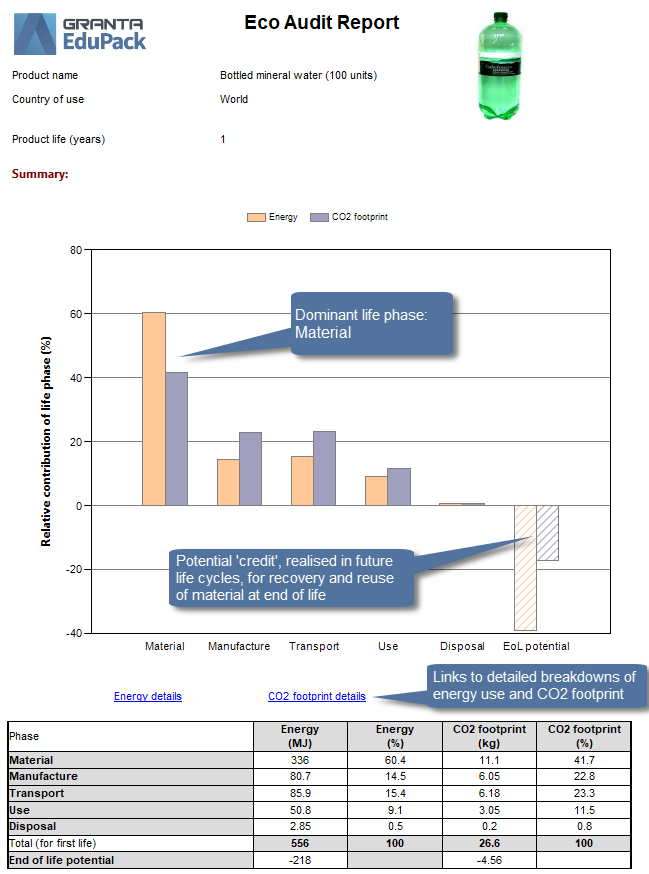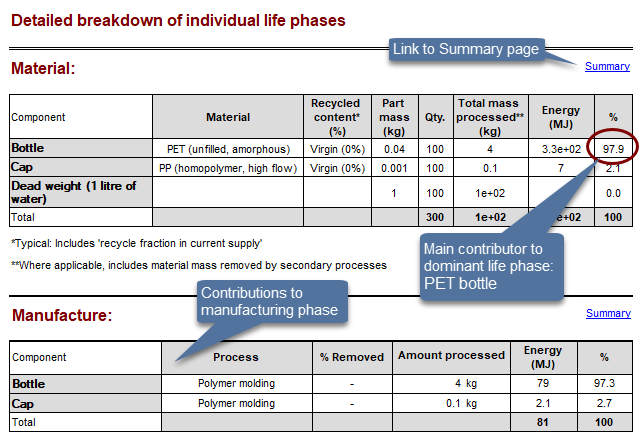Example report
Extracts of an Eco Audit report generated from a case study of a PET bottle.
The life cycle analysis for a PET drink bottle is as follows:
- Bottle and cap manufactured from virgin materials
- Filled bottles transported 550km from filling plant to point of sale
- Bottles refrigerated for 2 days at point of sale
- Bottle and cap recycled at end of life
Despite being transported 550km and refrigerated for two days, the material phase is the dominant life phase of the product, accounting for around 60% of the energy used and 40% of the carbon footprint:

Having identified the Material phase as the dominant life phase, the main component contributing to this phase can be identified by examining the detailed breakdown. This shows that 97% of the material energy arises from the PET bottle.
Thus, minimizing the embodied energy and CO2 footprint of the PET bottle should be the main design objective if we wish to reduce the environmental impact of our mineral water product.
